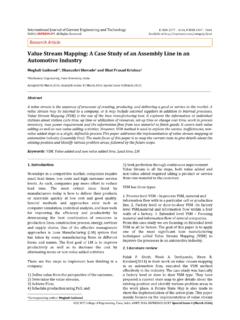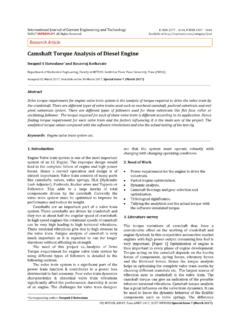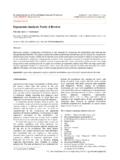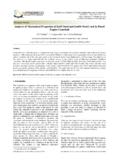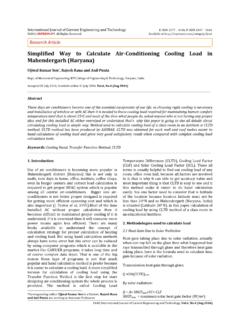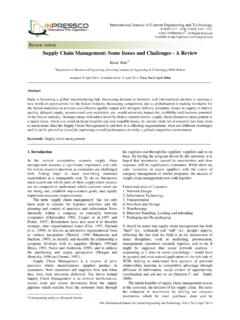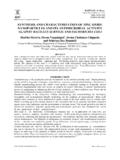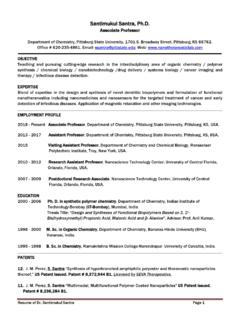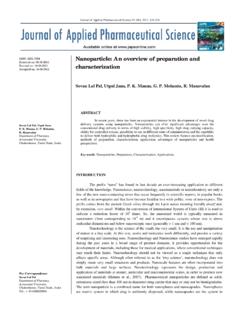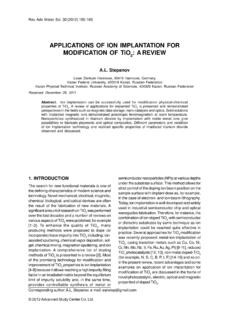Transcription of Ay y γ -Fe2O3 nanoparticles and its Characterization
1 International Journal of Current Engineering and Technology E-ISSN 2277 4106, P-ISSN 2347 5161 2015 INPRESSCO , All Rights Reserved Available at Research Article 321| International Journal of Current Engineering and Technology, , (Feb 2015) Ayurvedic synthesis of -Fe2O3 nanoparticles and its Characterization Tambur Pavani , Rao *, Chakra and Centre for Nano Science and Technology, Institute of Science and Technology, Jawaharlal Nehru Technological University Hyderabad, Hyderabad 500085, India Accepted 07 Feb 2015, Available online 10 Feb 2015, , (Feb 2015) Abstract Ayurveda has great importance in the synthesis of Bhasma (ash), as the procedure involved is cost effective, on toxic and eco-friendly.
2 This paper outlines the novel and modern process is used to synthesize iron oxide nanoparticles (Lauha bhasma) with successive purification steps using herbal ingredients. The synthesized samples were characterized using X-ray diffraction, Vibrating Sample Magnetometer, Particle Size Analyzer and Transmission Electron Microscopy to identify how the purification steps influenced the structural, magnetic, morphology properties of iron oxide nanoparticles . From X-ray diffraction it was observed iron oxide nanoparticles have cubic structure.
3 VSM studies also confirmed the same as XRD studies with well-defined loss of hysteresis loop of a coercive field and the remnant magnetization. The synthesized sample exhibit super paramagnetization at room temperature. Keyword: Ayurveda, Lauha bhasma, iron oxide nanoparticles , X-ray diffraction, Vibrating Sample Magnetometer, TEM. Introduction 1 There are many methods for the synthesis of iron oxide nanoparticles like sol-gel method, solution combustion method, co-precipitation method etc., which involves chemicals, environmental toxic.
4 But the synthesis in ayurvedic method involves herbal products that are nontoxic, environmental friendly and rapid procedure. Many reviewers have gone through the procedure but usage of modern equipment like muffle furnace etc., is seen in the present process. Ayurvedic bhasma is the oldest form of Nanotechnology. It is a scientific process in which metal is transformed into therapeutically active form using herbal ingredients it is called as nano medicine for various chronic diseases. The electrical, optical, thermal, inorganic, chemical and biological behavior of nano particles gets changed due to basic character got changed , from metal to nano.
5 Gamma Iron Oxide Nano particles-Maghemite is metastable phase between magnetite and hematite. Oxygen ions are cubic close packed with both octahedral and tetrahedral sites occupied by iron in the crystalline structure of maghemite (You Qiang et al, 2006). The main distinct feature of maghemite is the presence of vacancies in Fe sites paralleled with crystal symmetry loss. -Fe2O3 is n-type semiconductor material with very small band gap of eV has numerous applications in medical fields like in drug delivery systems as nano carrier and applications in numerous *Corresponding author: Rao fields: Coatings, lithium batteries, lithium iron phosphate batteries acts as targeted drug in wear-resistant materials.
6 In this paper, firstly a speedy method for the synthesis of iron oxide nanoparticles by ayurvedic method was discussed. Secondly, various Characterization techniques were performed to confirm the excellence of nanoparticles . Materials and Method Materials involved in the process were iron filings (precursor material), sesame oil (edible oil), butter milk, rice gruel solution, panchagavya (cow urine), horse gram decoction and triphala. A modern synthesis involves six purification steps: 1.
7 Iron turnings or iron fillings were taken as precursor material. In first purification step iron fillings were treated with sesame oil , used to eliminate rust, greasy material. 2. In second purification step the material obtained from previous step was quenched with buttermilk that removes impurities and oil content embedded. 3. In third purification step the material obtained from earlier step was treated with rice gruel solution, panchagavya (cowurine) and Horse gram decoction. Importance of rice gruel solution is that it contains phytic acid, removes Fe3+ ions.
8 Panchagavya (cow urine) acts as antibacterial agent. Horse gram decoction contains Gallic acid removes Fe3+ions get reduced to Fe2+ions. (Balaji Krishnamachary et al, 2012; Singh Neetu et al, 2010). Tambur Pavani et al Ayurvedic synthesis of -Fe2O3 nanoparticles and its Characterization 322| International Journal of Current Engineering and Technology, , (Feb 2015) 4.
9 This state enters mucosal cells easily into the body. These three steps were considered as normal purification steps involves aging for half an hour repeat the process for seven times and heat treated at 5300C-5600C. 5. In fourth purification step the material obtained from prior step was treated with triphala decoction constitutes Phyllanthus emblica, Terminalia chebula and Terminalia bellerica plays a major role in the synthesis acts as blood cleansing agent. 6. In fifth purification step the material attained from earlier step was exposed under sunlight, contamination get removed.
10 7. In concluding purification step the material from prior step was heat treated at 950C-1000C by addition of triphala decoction. These three steps were considered as special purification steps involve aging the ingredients for half an hour repeat the process for seven times. Reason behind consecutive repetitive steps was removal of impurities and to obtain better results. The final product obtained is Lauha bhasma (iron ash). Characterization Techniques The average crystallite size, structure and lattice parameters were measured by Bruker D8 X-ray diffractometer using Cuk -radiation ( = nm).

